Other
News Stanford researchers combine processors and memory on multiple hybrid chips to run AI on battery-powered smart devices
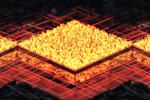
“In traditional electronics, separate chips process and store data, wasting energy as they toss data back and forth over what engineers call a “memory wall.” New algorithms combine several energy-efficient hybrid chips to create the illusion of one mega–AI …

“These fleeting disruptions, seen for the first time in lead hybrid perovskites, may help explain why these materials are exceptionally good at turning sunlight into electrical current in solar cells. Polarons are fleeting distortions in a material’s atomic lattice …
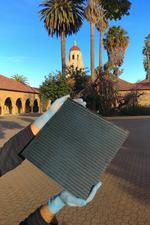
“High-speed manufacturing could advance the commercialization of perovskite modules, a green alternative to conventional solar panels made of silicon. Most solar cells today are made with refined silicon that turns sunlight into clean electricity. Unfortunately, the process of refining silicon …

“The display would feature brighter images with purer colors and more than 10,000 pixels per inch. By expanding on existing designs for electrodes of ultra-thin solar panels, Stanford researchers and collaborators in Korea have developed a new architecture for …

“Adding polymers and fireproofing to a battery’s current collectors makes it lighter, safer and about 20% more efficient. Menlo Park, Calif. — In an entirely new approach to making lithium-ion batteries lighter, safer and more efficient, scientists at Stanford University …
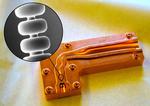
“It uses terahertz radiation to power a miniscule copper accelerator structure. Particle accelerators generate high-energy beams of electrons, protons and ions for a wide range of applications, including particle colliders that shed light on nature’s subatomic components, X-ray lasers …

“The camera will explore cosmic mysteries as part of the Rubin Observatory’s Legacy Survey of Space and Time. Crews at the Department of Energy’s SLAC National Accelerator Laboratory have taken the first 3,200-megapixel digital photos – the largest …
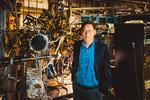
“For decades Z-X Shen has ridden a wave of curiosity about the strange behavior of electrons that can levitate magnets. Zhi-Xun Shen vividly remembers his middle school physics teacher demonstrating the power of X-rays by removing a chunk of radioactive …
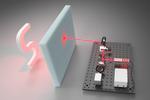
“Using a new algorithm, Stanford researchers have reconstructed the movements of individual particles of light to see through clouds, fog and other obstructions. Like a comic book come to life, researchers at Stanford University have developed a kind of X-ray …
News SLAC researchers find evidence for quantum fluctuations near a quantum critical point in a superconductor

“Theory suggests that quantum critical points may be analogous to black holes as places where all sorts of strange phenomena can exist in a quantum material. Now scientists are trying to pin down where this particular quantum critical point might …
